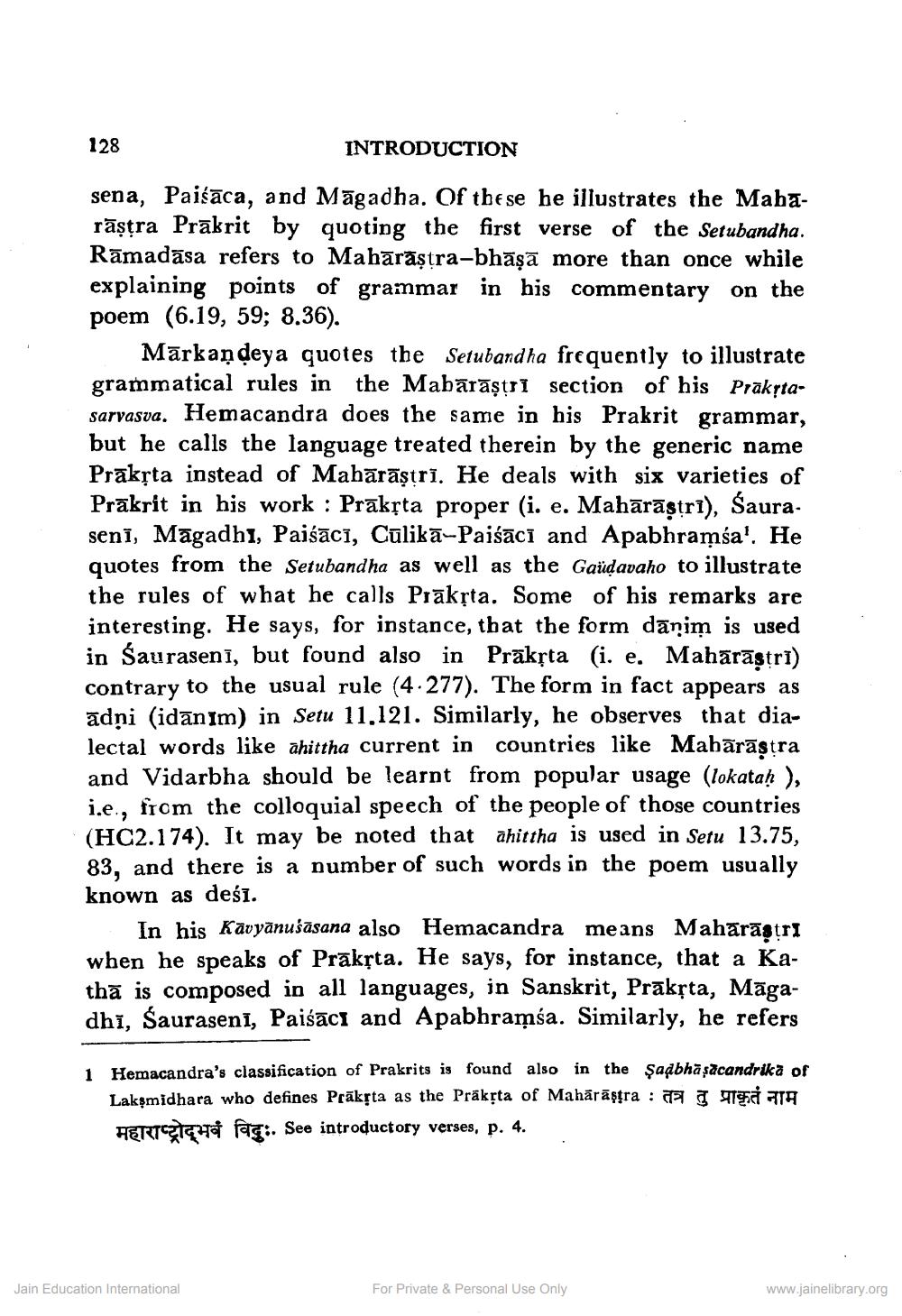________________
128
INTRODUCTION
sena, Paisāca, and Māgadha. Of these he illustrates the Mabarāstra Prākrit by quoting the first verse of the Setubandha. Rāmadāsa refers to Mahārāştra-bhāşā more than once while explaining points of grammar in his commentary on the poem (6.19, 59; 8.36).
Mārkandeya quotes the Setuband ha frequently to illustrate grammatical rules in the Mabārāști section of his Prūkstasarvasva. Hemacandra does the same in his Prakrit grammar, but he calls the language treated therein by the generic name Praksta instead of Mahārāștri. He deals with six varieties of Praksit in his work : Prakrta proper (i. e. Mahārāştri), Śaura. senī, Māgadhi, Paiśācī, Cūlikā-Paiśācī and Apabhramsa! He quotes from the Setubandha as well as the Gaidavaho to illustrate the rules of what he calls Praksta. Some of his remarks are interesting. He says, for instance, that the form danim is used in Saurasenī, but found also in Prāksta (i. e. Mahārāstrī) contrary to the usual rule (4.277). The form in fact appears as ādņi (idānım) in Setu 11.121. Similarly, he observes that dialectal words like āhittha current in countries like Mahārāstra and Vidarbha should be learnt from popular usage (lokatah ), i.e., from the colloquial speech of the people of those countries (HC2.174). It may be noted that ahittha is used in Setu 13.75, 83, and there is a number of such words in the poem usually known as desī.
In his Kāvyānušāsana also Hemacandra means Mahārāşırı when he speaks of Praksta. He says, for instance, that a Kathā is composed in all languages, in Sanskrit, Prūksta, Māgadhī, Saurasens, Paiśācı and Apabhramśa. Similarly, he refers
1 Hemacandra's classification of Prakrits is found also in the şaạbhāşacandrika of Lakşmidhara who defines Präkşta as the Präkşta of Mahārāstra : E
TE HERTSIT Faci. See introductory verses, p. 4.
Jain Education International
For Private & Personal Use Only
www.jainelibrary.org




